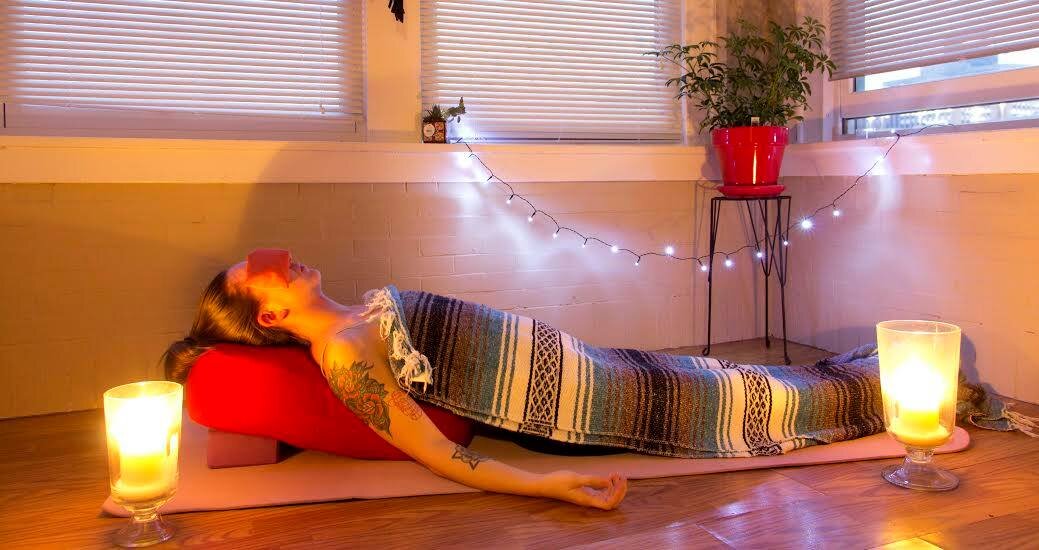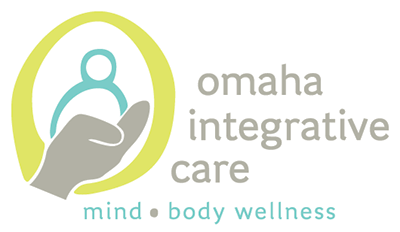
Anxiety affects roughly 40 million people in the United States; that’s 18 percent of the population according to the ADAA (Anxiety and Depression Association of America). There are different types of diagnoses, like panic disorders, generalized anxiety disorder, social anxiety disorder, OCD, and PTSD. Women are twice as likely to develop an anxiety disorder than men.
From a holistic perspective, the cause of anxiety can be traced back to our thoughts focusing too much on the future, making it hard for us to stay in the present. Holistic approaches refer to the types of anxiety as insomnia, over-thinking, public speaking, shortness of breath, migraines, or heart palpitations. This approach invites us to ask, “What is the root of it?” or “What is the thought that is creating anxiety?” The answer is unique to everyone.
Although anxiety can be very scary to the person experiencing it, there are ways to help. Below are a few different approaches:
1. Yoga
There are different types of yoga that help relieve anxiety, particularly slow, intentional types of yoga like Hatha, slow Vinyasa, or Restorative Yoga. Restorative Yoga has been proven to help decrease anxiety because it helps you soften the physical body, allowing the heart rate to slow down, which in turn helps the mind to slow down. Restorative Yoga is a more meditative practice because you are holding postures for anywhere from five to twenty minutes, mostly seated or lying down, supported by props. This is an opportunity to get familiar with the thought patterns that are coming in. Meditation is not “shutting the mind off” but rather building a relationship to the mind: Watching what thoughts arise, without judgment, and developing the ability to step outside of the thoughts to see them as they are — just thoughts.
2. Breathing
In yoga, pranayama is the practice of various breathing exercises. Prana is the vital life force/energy. Ayama means the prolongation, the restraint, or the expansion of the vital life force/energy. This is a practice that has been around for thousands of years, dating all the way back to Hatha Yoga (1000 B.C.E.) and it can be found in Astanga lineage of the 8 limbs of yoga. Pranayama releases energetic blockages and stagnation in the body. There are thousands and thousands of energy lines in the body called nadis, and pranayama helps by bringing fresh oxygen to the system, increasing blood flow, and releasing gaseous waste. Depending on what type of breathing exercises you are doing, you can help put the body into a parasympathetic state (“rest & digest”).
3. Meditation
Meditation has many benefits, and there are many types of meditation. When it comes to anxiety, meditation helps by providing a present moment awareness of the sensations in the body that arise (also known as vippasana meditation). This assists us in noticing what arises as it arises, and getting curious about where we feel the anxiety in our bodies. Is it in your belly? In your chest? Where do you feel it? It also assists us in noticing the thoughts that could be contributing to the anxiety. Are we able to catch ourselves before the mind spins off into stories? A powerful question to ask in these moments is, “Is this true?”
4. Essential Oils
Some oils are extremely helpful in relieving anxiety. Some of them can be ingested, applied topically on the skin, or diffused through a special container (diffuser) that spreads the oil in the air. Here are the oils and usages I recommend for anxiety:
- Lavender: This is my go to! The smell is calming and relaxing. You can apply it topically or you can diffuse it.
- Serenity: This is a combination of Lavendar, Cedarwood, Ho Wood Leaf, Ylang Ylang Flower, Marjoram Leaf, Roman Chamomile Flower, Vetiver Root, Vanilla Bean Absolute, and Hawaiian Sandalwood. All are very grounding oils. You can apply this topically, ingest it (by capsule), or diffuse it.
- Chamomile: Another calming oil that can be ingested, applied topically, or diffused. It is known for its floral, sweet, loving scent.
- Peace: This is a combination of Vetiver Root, Lavender Flower, Ylang Ylang Flower, Frankincense Resin, Clary Sage Flower, Marjoram Leaf, Labdanum Leaf/Stalk, Spearmint Herb — all grounding oils. This one has a bit of a minty scent to it. It can be applied topically or diffused.
If you apply the oils topically, I recommend applying them to the bottoms of the feet for the most benefit. The feet have the most open pores of the whole body and will absorb the oil a lot faster. You can do this at any time you see fit or before bed. You can also apply the oils to your chest. This way, you can have it near by to breathe in. You can also rub some in your hands, cupping them around the nose and inhaling the oil.
5. Diet/Foods
What you put into your body can have an effect on your digestive system, your heart, your liver, your nervous system, and your mind! It’s helpful to focus on rich, warm, grounding foods to assist with anxiety.
Some suggestions to consider: potatoes, legumes, whole freshly cooked vegetables, warming spices (like ginger, cinnamon, cumin), high quality oils such as olive oil or ghee, and water either at room temperature or hot. These are all very grounding to the system.
Try to avoid alcohol, caffeine, too much raw food, cold water or drinks, fried foods, processed foods, and snacks, such as popcorn or crackers.
These five approaches are accessible tools you can implement to empower yourself to relieve anxiety. As we say in yoga – “You have everything you need within you!”

Connect With Us